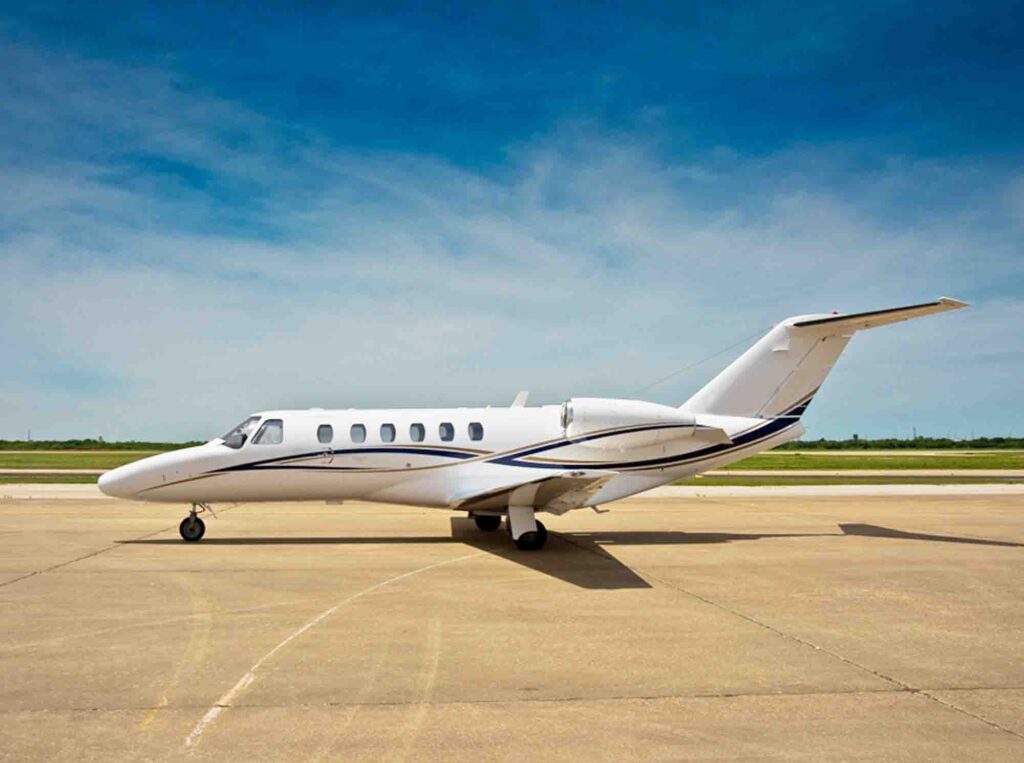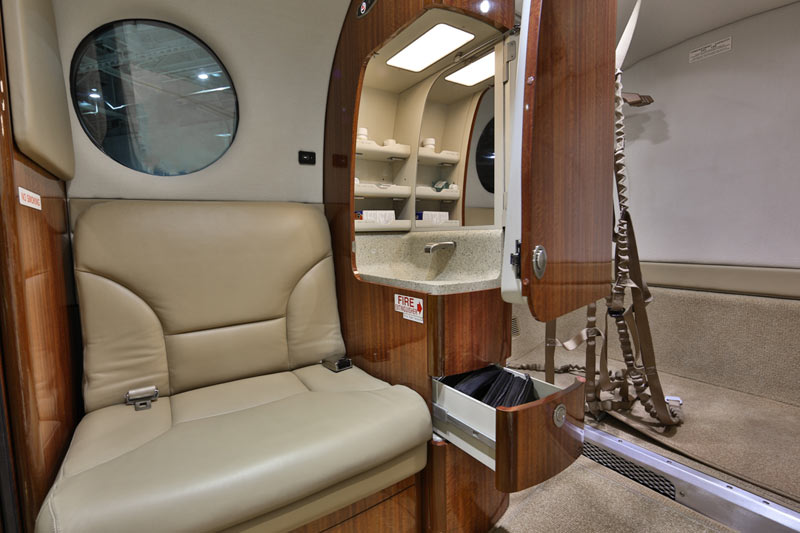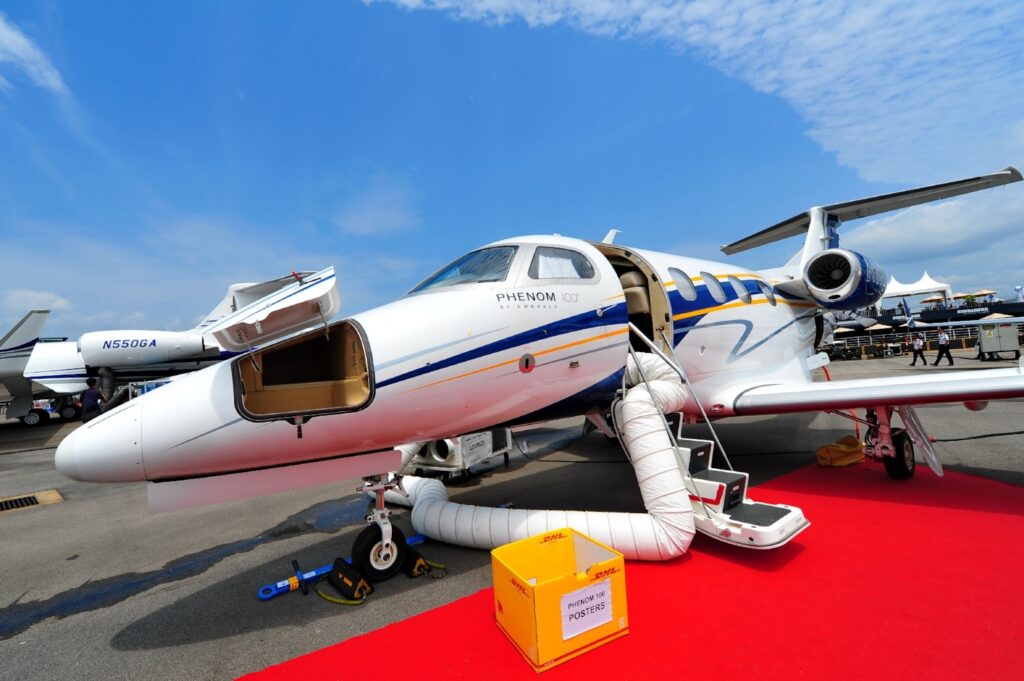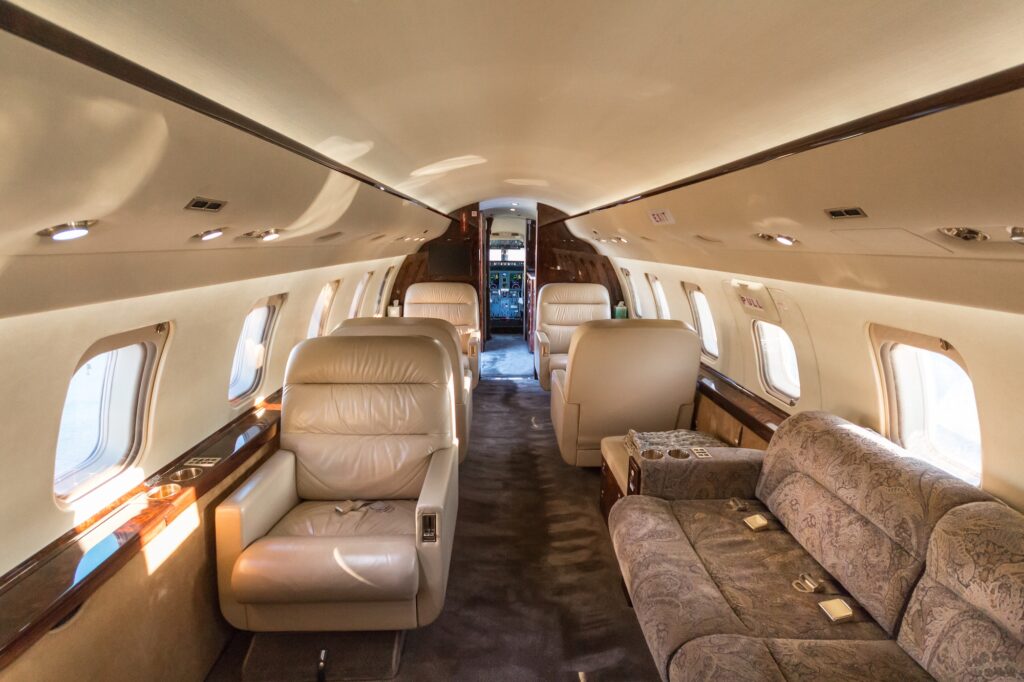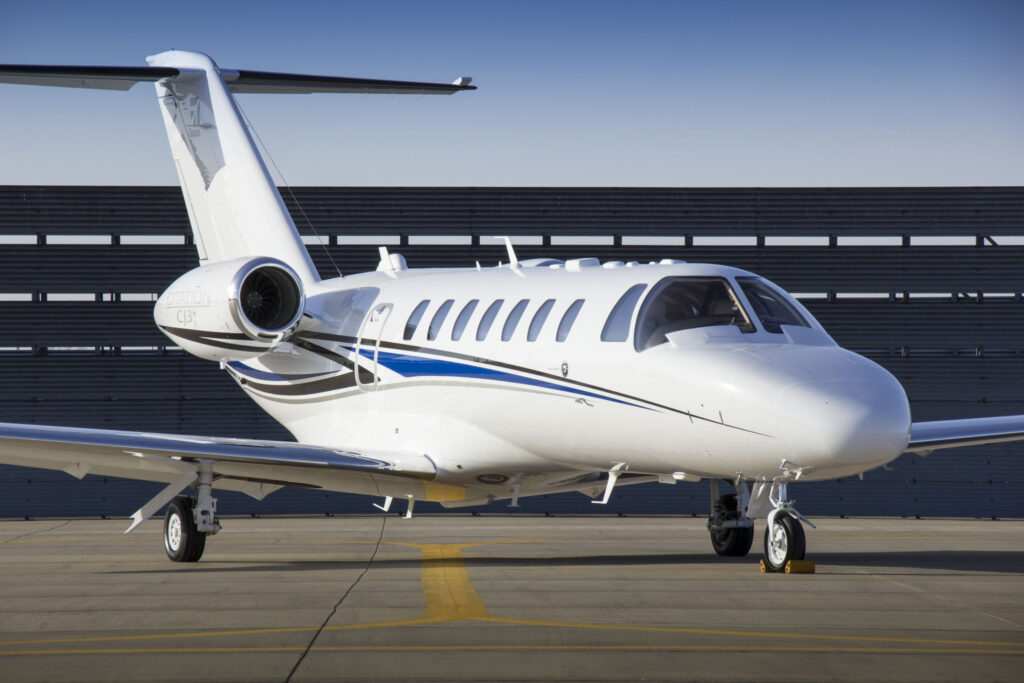CitationJet/Model 525
First delivered in 1993, the original CitationJet, or Model 525, was created as a replacement for the Citation I. Compared to the Citation I, the CitationJet has a modified fuselage, a new supercritical laminar flow wing, a new tail, and new avionics. Its cabin also has a lowered aisle for increased cabin height.
The CitationJet comes equipped with two Williams FJ44-1A engines. It has a normal cruise speed of 355 knots, a range of 1,250 nautical miles, a climb rate of 3,311 feet per minute, and requires approximately 3,910 feet of runway to takeoff and 3,309 to land.
CJ1/CJ1+
In 2000, Cessna introduced the CJ1 to the market. In 2005, they moved on to the CJ1+. For the CJ1+, Cessna replaced the original CJ1’s Williams International FJ44-1A engines with FJ44-1AP FADEC-controlled engines, giving the CJ1+ slightly more thrust and increased operating weights. The CJ1+ was also given an interior upgrade, and its ProLine 21 avionics system was equipped with FMS-3000, providing full 3D navigational capabilities.
Compared to the CJ1, the CJ1+ has an increased cruise speed, from 371 knots to 379, an increased range, from 1,161 nautical miles to 1,244, an improved climb rate, from 3,200 feet per minute to 3,900, and a useful payload increase of more than 100 pounds, from 419 to 531. Its runway performance was improved, as well. Takeoff distance went from 4,115 feet on the CJ1 to 3,890 on the CJ1+, and landing distance went from 3,366 to 3,158.
CJ2/CJ2+
Parallel to the timeline of the CJ1/CJ1+, Cessna also began delivering the CJ2 in 2000 and introduced the CJ2+ in 2005. The CJ2 comes equipped with FJ44-2C engines, while the FJ44-3A-24 engines found on the CJ2+ offer better fuel efficiency, an increased range, improved climb rate, better takeoff performance and increased useful payload, as well as a redesigned cabin for extra soundproofing, making it a significantly more comfortable ride for passengers. FADEC was also added to the CJ2+, making flights more comfortable for the pilot, as well.
The upgraded engines improved the CJ2+’s performance by increasing its range from 1,512 nautical miles to 1,613, improving its climb rate by about 250 feet per minute, from 3,870 to 4,120, and improving its takeoff performance by about 60 feet, from 3,420 to 3,360. Its useful payload with full fuel was also increased from 651 pounds to 697.
[ulp id=’ksrvpykbSKmvluGu’]
CJ3/CJ3+
The CJ3 hit the market in 2004, followed by the CJ3+ in 2014. The biggest changes that took place from the CJ3 to the CJ3+ took place in the cockpit with an upgraded avionics system and complete cockpit redesign, moving from the Rockwell Collins ProLine 21 found on the CJ3 to the Garmin G3000. The CJ3 was already one of the best-selling business jets in the world, but some owners that were used to a Garmin avionics system hesitated to buy in to the CJ3’s hype. Thus, the CJ3+ was created, broadening the aircraft’s market.
The change from the ProLine 21 to the G3000 eliminated many of the switches previously found in the cockpit, leading to a complete redesign. FADEC control, air conditioning, pressurization, ignition control, lights and system test, all of which were previously controlled by switches, were integrated into the G3000. USB ports were also added, which is a huge advantage given today’s mobile technology. The CJ3+ was also given an interior upgrade, including LED lighting and the newly designed (at the time of production) seats also found on the M2.
Both the CJ3 and CJ3+ are equipped with Williams International’s FJ44-3A engines, giving them a normal cruise speed of 406 knots, a range of about 1,875 nautical miles, a climb rate of about 4,478 feet per minute, and impressive runway performance with a takeoff distance of 3,180 feet and landing distance of 2,770 feet.
CJ4
In 2010, Cessna began deliveries of the new and improved CJ4. For the CJ4, Cessna introduced a moderately swept wing similar to those found on the Citation Sovereign. Its cabin is also 21 inches longer than the CJ3’s, allowing it to seat as many as nine passengers with a single pilot. Like the CJ3, the CJ4 comes equipped with the ProLine 21 avionics sytem.
Equipped with two FJ44-4A engines, the CJ4 has a normal cruise speed that blows all of the previous Citation Jets out of the water at 443 knots, a range of 1,948 nautical miles, a climb rate of 3,854 feet per minute, and it requires approximately 3,413 feet of runway to takeoff and 3,038 to land.

